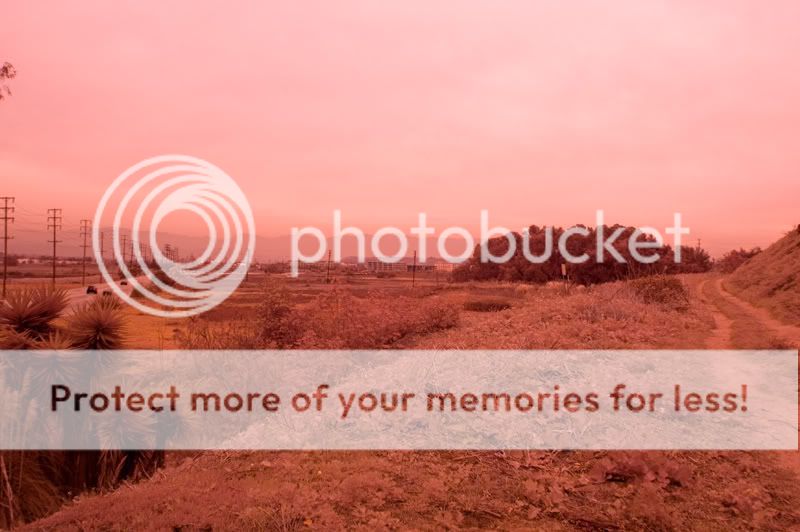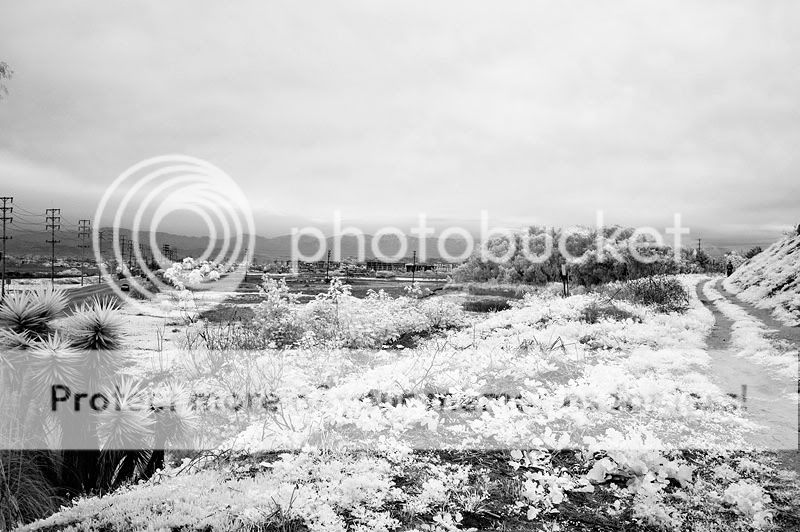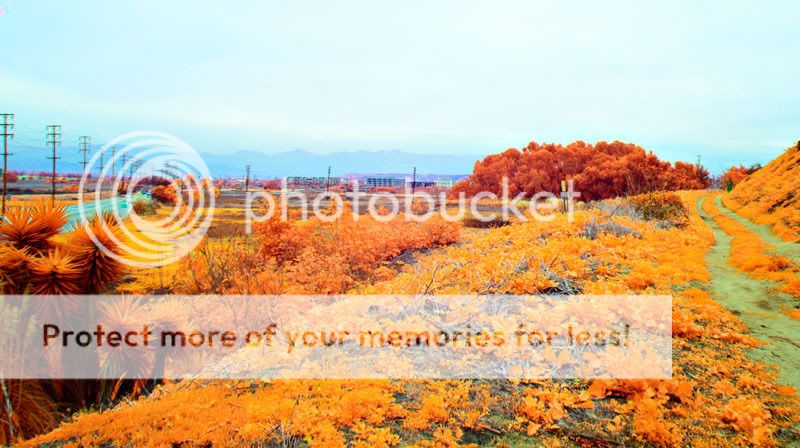charlie chipman
New member
I don't really know where to put this so I will put it here, it is something I did for another forum some time ago I thought I would share here as well, may be interesting to some. Feel free to move this thread to a more appropriate section of the forum if you see fit.
Here I will demonstrate the amount of haze there is in the ultraviolet spectrum, and how you can see further with the Infrared spectrum than ever before. This is just a playful demonstration, nothing more
These are all shot with my D70 I have modified for infrared and ultraviolet photography. This means that the internal filter has been removed so when I take a picture with the camera with no filters attached it is contaminated with Infrared creating a colour cast (and soft images due to focus shift between the spectrums).
Anyway here is a picture straight from the camera, aside from the colour cast the scene looks pretty close to as I saw it out of my own eyeballs as far as the clouds and mountains in the background look, typical los angeles scenery this is shot at the ballona creek wetlands near marina del rey.

This next picture I used the Baader U filter (passes approx 300nm-400nm) that blocks all visible light and Infrared light leaving only the ultraviolet spectrum to reach the sensor. As you will see the mountains in the distance just up and disappeared as well as the definition in the clouds. The foliage turns dark because it absorbs UV.

This final image I used a B+W 093 filter (850nm-1100nm if I remember correctly) that blocks all of the ultraviolet and visible spectrum's leaving only Infrared (or near infrared if you want to get technical) with this filter and a custom white balance pictures come out of the camera monotone, was not converted after the fact. As you will see there is not as much haze and the mountains in the distance are more defined as well as the clouds. the foliage turns bright white because it reflects massive amounts of IR.

So anyway, this is just a little comparison of what happens at different frequencies of "light". You can view the red, green, and blue channels of your visible light photos and see much of the same effect only not this extreme.
And finally, I assigned the UV picture to the blue channel, the visible picture to the green channel, and the IR picture to the red channel to come up with a multispectral picture. perhaps if we could see in the UV and IR spectrums as well as the visible spectrums our world would look something more like this.

So if you want to make the distance disappear shoot UV. If you want to see further that our eyes can see shoot IR (I hear this works shooting through heavy rain too), and if you want to be reminded of your hippy days combine everything all the time.
Here I will demonstrate the amount of haze there is in the ultraviolet spectrum, and how you can see further with the Infrared spectrum than ever before. This is just a playful demonstration, nothing more
These are all shot with my D70 I have modified for infrared and ultraviolet photography. This means that the internal filter has been removed so when I take a picture with the camera with no filters attached it is contaminated with Infrared creating a colour cast (and soft images due to focus shift between the spectrums).
Anyway here is a picture straight from the camera, aside from the colour cast the scene looks pretty close to as I saw it out of my own eyeballs as far as the clouds and mountains in the background look, typical los angeles scenery this is shot at the ballona creek wetlands near marina del rey.

This next picture I used the Baader U filter (passes approx 300nm-400nm) that blocks all visible light and Infrared light leaving only the ultraviolet spectrum to reach the sensor. As you will see the mountains in the distance just up and disappeared as well as the definition in the clouds. The foliage turns dark because it absorbs UV.

This final image I used a B+W 093 filter (850nm-1100nm if I remember correctly) that blocks all of the ultraviolet and visible spectrum's leaving only Infrared (or near infrared if you want to get technical) with this filter and a custom white balance pictures come out of the camera monotone, was not converted after the fact. As you will see there is not as much haze and the mountains in the distance are more defined as well as the clouds. the foliage turns bright white because it reflects massive amounts of IR.

So anyway, this is just a little comparison of what happens at different frequencies of "light". You can view the red, green, and blue channels of your visible light photos and see much of the same effect only not this extreme.
And finally, I assigned the UV picture to the blue channel, the visible picture to the green channel, and the IR picture to the red channel to come up with a multispectral picture. perhaps if we could see in the UV and IR spectrums as well as the visible spectrums our world would look something more like this.

So if you want to make the distance disappear shoot UV. If you want to see further that our eyes can see shoot IR (I hear this works shooting through heavy rain too), and if you want to be reminded of your hippy days combine everything all the time.

